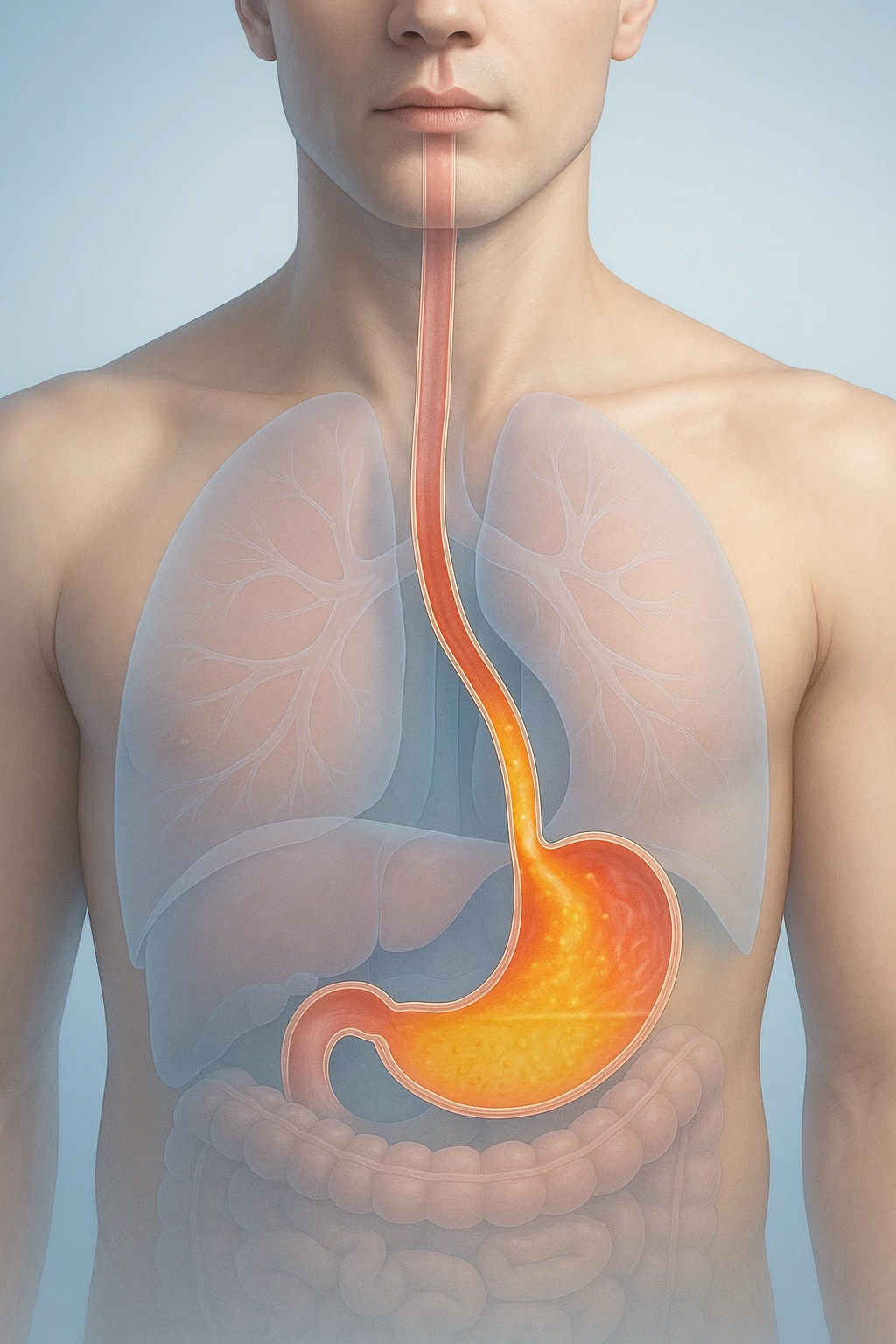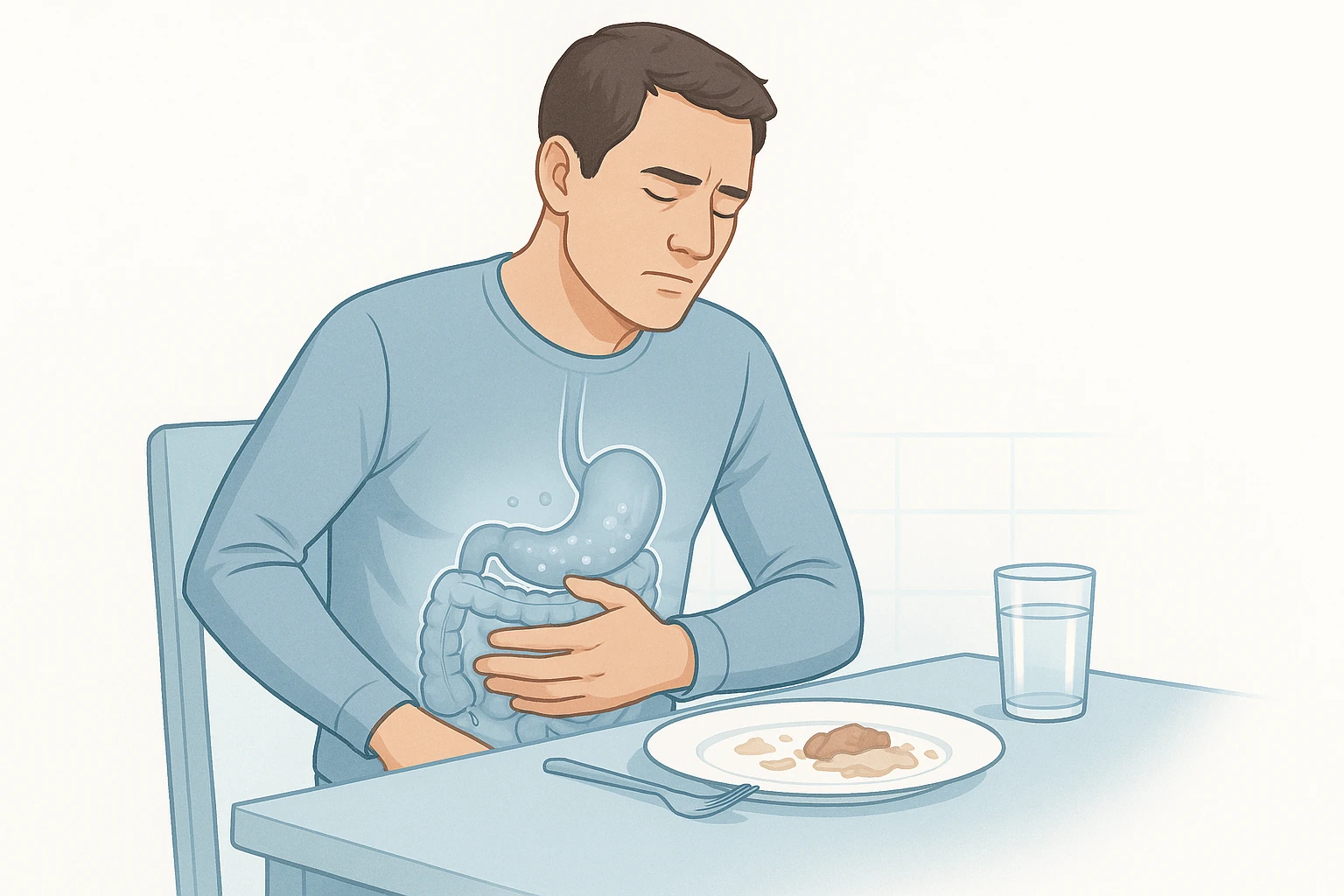Stomach Cramps in Children and Adults: When to Seek Care
What Stomach Cramps Are
Stomach cramps are a common experience for both children and adults, and they can feel concerning when they happen suddenly. In many cases, the discomfort comes and goes, which can make it difficult to describe or understand. Stomach cramps refer to episodic, often colicky abdominal pain that may arise from the organs of the digestive system or nearby structures. This type of pain usually has a squeezing or tightening quality, rather than feeling sharp or burning. Understanding this distinction can help parents and caregivers notice patterns and describe symptoms more clearly when speaking with a healthcare professional.
It is also helpful to recognize that “abdominal pain” is a broad term that includes different sensations. Some discomfort may feel aching or dull, while other pain may be sharp or intense. Cramps specifically describe a recurring, wave-like sensation that typically comes from the muscles in the digestive tract or other nearby organs tightening temporarily. Recognizing this pattern can be reassuring, as many causes of cramping are mild and short-lived.
What Causes the Cramping Sensation
The cramping sensation often occurs when muscles in the stomach or intestines contract in response to movement of food, gas, or fluid through the digestive system. These organs are made of smooth muscle that works rhythmically throughout the day, even when a person is resting. Sometimes these normal movements become more noticeable, especially if the digestive tract is irritated, moving slowly, or reacting to something that was eaten. In other cases, cramping may arise from nearby structures, such as the uterus during menstrual cycles, which can cause pain that feels similar to gastrointestinal cramping and may be felt in the lower belly.
While the sensation may be uncomfortable, it is often part of how the body regulates itself. Short episodes of cramping can occur during digestion, during mild viral illnesses, or during times of stress. These sensations may pass on their own as the body settles and returns to its usual rhythm.
How to Describe the Pain Accurately
Being able to describe stomach cramps clearly can help healthcare providers better understand what is happening. Families may find it useful to note when the pain starts, how long it lasts, and whether it comes in waves or stays constant. Observing whether the discomfort increases after eating, improves with rest, or is accompanied by changes in bowel habits can offer helpful context.
- Note whether the pain comes and goes or stays steady.
- Observe whether the pain feels like tightening, pressure, or waves.
- Pay attention to whether it changes with eating, movement, or rest.
- Notice any accompanying symptoms such as nausea or changes in bowel movements.
Using simple, descriptive language can make conversations with clinicians more effective. For example, noting that the pain “comes and goes” or “tightens and then eases” helps distinguish cramping from other forms of abdominal pain. This clarity can guide decisions about whether the situation is likely to improve at home or whether medical assessment may be needed.
Common Causes of Stomach Cramps
Stomach cramps can often happen during day-to-day life and may not signal anything serious. Many common causes are temporary and related to how the digestive system is working at a given moment. These sensations may be uncomfortable, but they frequently improve on their own as the body adjusts. Recognizing patterns can help parents and caregivers feel more confident in understanding what might be happening and when to simply monitor at home.
Digestive System Triggers
One of the most frequent reasons for stomach cramps is how the digestive system moves food, gas, and fluid. Gas buildup, indigestion, constipation, and mild viral illnesses that affect the stomach and intestines are all common situations in which the digestive tract may become more sensitive. During these times, the muscles in the stomach or intestines may contract more noticeably, leading to a cramping sensation.
- Gas buildup
- Indigestion
- Constipation
- Mild viral gastroenteritis
Viral gastroenteritis, sometimes known as a “stomach bug,” can also cause temporary cramping as the digestive system reacts to irritation. In many cases, these symptoms come in waves and gradually improve as the digestive tract recovers. Because these causes are often self-limited, the discomfort may resolve naturally once digestion steadies again.
Gut-Brain Connection
The digestive system and the nervous system are closely linked. Stress and emotional tension can play a meaningful role in how the body experiences stomach cramps. When a person feels worried or overwhelmed, the body may respond physically, and the digestive muscles may tighten more than usual. This type of cramping can happen even when there is no underlying illness affecting the digestive organs themselves.
This connection can be especially noticeable in children and teens who may express emotional discomfort through physical symptoms. Understanding that stress can influence stomach sensations can help families recognize why symptoms sometimes appear during busy school weeks, before tests, or during transitions or changes in routine.
Menstrual-Related Cramps
For individuals who menstruate, the uterus naturally contracts during the menstrual cycle. These contractions can cause lower abdominal discomfort that may feel similar to stomach cramps. The sensation can overlap with gastrointestinal symptoms because of the close location of pelvic and abdominal organs.
In adolescents, this may be particularly noticeable as the body adjusts to regular cycles. While the sensation can vary from person to person, it is common for menstrual-related cramping to come and go and to be felt in the lower part of the abdomen.
When Stomach Cramps Need Medical Attention
Many stomach cramps are mild and improve on their own over time. However, some situations call for closer attention. Understanding when to monitor at home and when to seek medical care can help families feel more confident and prepared. The key is to look at how the pain behaves and whether other concerning symptoms are present. Immediate evaluation is advised when pain is severe, worsening, or persistent, as this can be a sign that the body needs medical support.
Patterns and Location of Pain
Observing when the pain starts, how long it lasts, and where it is felt can provide helpful clues. Noting whether cramps come in waves or stay constant, and whether they improve or worsen after meals, rest, or activity, can help clarify what may be happening. In addition, the location of discomfort can sometimes guide understanding. For example, pain felt broadly across the abdomen may behave differently than pain that is focused in one specific area. Recording these patterns can be especially useful when speaking with a healthcare professional, as the history of pain location, timing, and associated symptoms is a key part of how clinicians determine next steps.
Parents and caregivers may also find it helpful to observe any patterns over the course of the day. For instance, symptoms that are mild upon waking and increase during busy periods may reflect the body’s response to routine stress or digestive rhythms. This information provides context that supports an accurate evaluation, even when symptoms are subtle.
Red Flag Symptoms
There are certain symptoms that suggest a need for timely medical assessment. These symptoms do not necessarily mean that something serious is happening, but they do indicate that professional evaluation is important.
- Fever
- Persistent vomiting
- Blood in stool or vomit
- Black or tarry stools
- Marked tenderness when the abdomen is touched
- Signs of dehydration
- Severe or worsening pain that does not improve with rest
When these features appear, contacting a healthcare provider or seeking urgent medical attention is the best step to ensure appropriate evaluation.
What Happens at the Doctor’s Visit
During a medical evaluation, the clinician will first ask about the history of the pain. This includes where the pain is located, when it started, what it feels like, and whether any other symptoms are present. This conversation helps guide the differential, which is the process of considering possible causes based on the symptom pattern. Physical examination findings then help determine whether further testing is needed.
If testing is recommended, it is based on the specific symptoms and clinical findings. These tests may include blood work, stool studies, or imaging to gather more information about how the digestive system is functioning. Not every case requires testing, and many evaluations rely primarily on the history and physical exam. The goal of the visit is to understand the cause of the discomfort and determine the safest and most appropriate next steps.
Caring for Stomach Cramps at Home and Preventing Recurrence
When stomach cramps are mild and not accompanied by concerning symptoms, supportive care at home can help reduce discomfort and allow the body time to settle. Mild cramps often improve with rest, hydration, and a light diet, especially when the digestive system is adjusting or reacting to everyday triggers. Observation at home is reasonable when symptoms remain mild and none of the red flag signs discussed earlier are present. Many families find that small, gentle steps can provide relief while also helping identify what makes symptoms better or worse.
Home Relief Strategies
Allowing the digestive system to rest can be helpful when cramps are present. Drinking fluids in small, steady amounts supports hydration and can help the body regulate digestion. Choosing gentle foods, such as simple grains or broth-based meals, may reduce the workload on the digestive tract while it recovers. A warm compress placed on the abdomen may also provide comfort by helping the muscles relax.
- Drink fluids slowly and regularly
- Choose gentle, light meals
- Use a warm compress on the abdomen
- Rest or reduce activity briefly
Rest is another important part of supportive care. Slowing down activities for a short period can help the body focus on easing the episode. Even small changes, such as sitting quietly or lying in a comfortable position, may make the cramping feel less intense. Families may also notice that mild cramps often come and go naturally as the digestive system resets itself.
Over-the-Counter Options
In some situations, families may consider over-the-counter products to help ease symptoms. There are general categories of medications that may be used for digestive discomfort, such as products intended to reduce gas or those designed to relax intestinal muscle spasms. It is important to use these products as directed and to avoid giving medications without first checking whether they are appropriate for the person’s age and health circumstances.
These options are typically used for temporary relief rather than long-term management. If symptoms do not improve, or if new symptoms appear, it may be time to seek medical advice. The goal is to support comfort while continuing to observe how symptoms change over time.
Everyday Prevention Habits
Some stomach cramps may be related to patterns in daily life. Establishing regular routines for meals and hydration can help the digestive system function smoothly. Eating slowly and allowing time for meals can reduce the likelihood of swallowing excess air, which may help limit gas buildup. Gentle physical activity, such as walking, may support regular bowel habits and overall digestive function.
- Maintain regular meal and hydration routines
- Eat slowly and avoid rushing meals
- Incorporate gentle daily movement
- Notice and adjust portions of foods that cause discomfort
- Take steps to reduce day-to-day stress where possible
Other general measures include noticing which foods consistently seem to increase discomfort and adjusting portions or timing accordingly. Dietary moderation, particularly with foods known to produce gas for some individuals, may help reduce cramping episodes. Additionally, stress reduction strategies-such as calming routines, consistent sleep schedules, or quiet time-may help decrease tension that can influence the digestive system. These prevention approaches aim to support the body’s natural balance rather than control symptoms forcefully.
Frequently Asked Questions
Are stomach cramps always a sign of illness?
No. Many stomach cramps are related to normal digestive activity, temporary irritation, or stress. They often improve on their own as the body settles. However, it is still helpful to pay attention to patterns and any additional symptoms.
Why do stomach cramps sometimes come and go?
Cramps often occur in waves because the digestive muscles tighten and relax in cycles. These movements can become more noticeable when digestion slows, gas builds up, or the body is under stress. The on-and-off nature of the sensation is one of the features that distinguishes cramping from other types of abdominal pain.
Can stress really cause stomach cramps?
Yes. The digestive system and nervous system communicate closely, which means emotional tension can influence digestive muscle activity. Children and teens may especially notice cramps during busy or stressful times. Recognizing this pattern can help reduce worry and guide supportive care.
How do I tell if the cramps are related to something I ate?
Noticing when symptoms appear in relation to meals can be useful. If discomfort repeatedly occurs after certain foods or eating patterns, those may be triggers. Keeping a simple note of timing and foods can help clarify patterns without requiring strict elimination.
When should stomach cramps be taken seriously?
Seek medical attention if pain is severe, steadily worsening, or does not improve with rest. Also watch for red flag symptoms such as fever, persistent vomiting, blood in stool or vomit, black stools, or marked tenderness. These signs suggest that the body may need prompt evaluation.
What does dehydration have to do with stomach cramps?
When the body loses fluids or is not taking in enough, digestion can slow or become strained. This can lead to increased sensitivity in the digestive tract. Drinking fluids slowly and steadily helps the digestive system function more smoothly.
What should I expect during a medical evaluation?
A clinician will ask about when the cramps started, how they feel, and whether any other symptoms are present. A physical examination helps determine whether further testing is needed. Many evaluations can be completed based on history and exam alone.
Can stomach cramps be prevented?
Consistent routines, staying hydrated, and being mindful of foods that cause discomfort can reduce episodes. Gentle physical activity and stress reduction may also support digestive balance. Prevention focuses on supporting the body’s natural rhythms rather than controlling symptoms forcefully.













